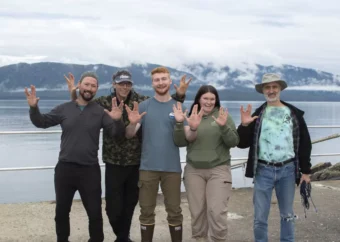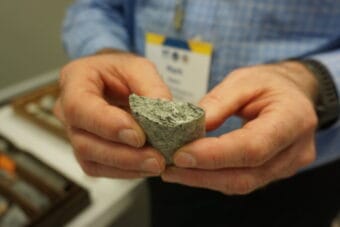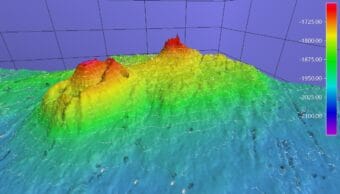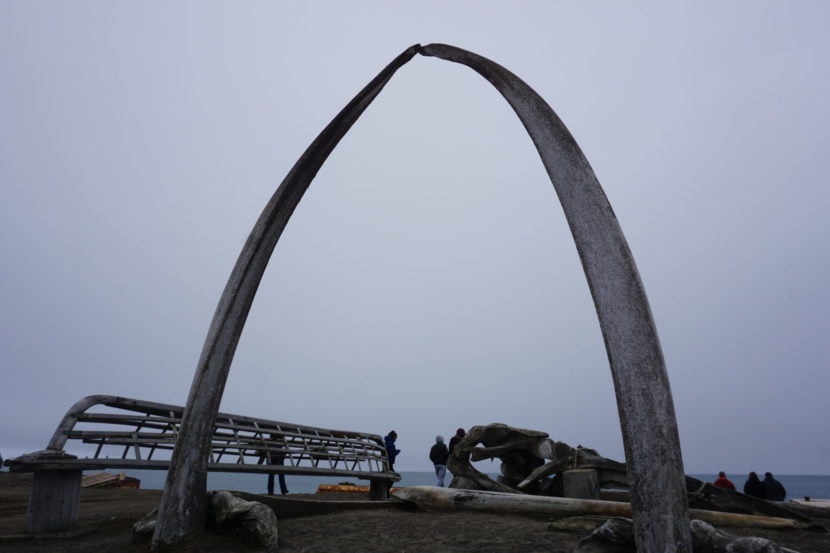
In the nation’s northernmost community, about 100 scientists, engineers and other Arctic experts are gathered this week to celebrate a cutting-edge research program that started in the 1940s.
The event in Utqiaġvik, also known by its former name of Barrow, is a conference marking the 75th anniversary of the Naval Arctic Research Laboratory, or NARL. The institution was originally created to support oil and gas exploration on the North Slope, but in short order became a world-class center for Arctic science.
Beyond establishing Utqiaġvik as an Arctic research heavyweight, NARL has another legacy: respect for Indigenous knowledge and partnership, a characteristic missing in much of the scientific world.
“The NARL facility has been a huge part of our North Slope Iñupiat community for 75 years,” said Pearl Brower, president of the Ukpeaġvik Iñupiat, or UIC, the local Native corporation. It is a mutually beneficial relationship, she said in a welcoming address.
“Indigenous people are the first ecologists, the first scientists of our lands. When we entwine generations with firsthand knowledge of place with western scientific models, we are stronger and more informed,” she said.

Brower calls herself a third-generation NARL associate. Her grandfather, Harry Brower Sr., worked as both a carpenter and a local science adviser at the facility, and her father, Price Brower, contributed with a similar combination of facility support and science advice. Brower remembers being a little girl hanging around the NARL cafeteria, wandering the buildings and looking at the animal samples, mostly fetuses of marine mammals like seals, that were preserved in jars. “It was a little bit morbid, but it was so cool to see,” said Brower, who was president of Iḷisaġvik College, a tribal college in Utqiaġvik, prior to her appointment this spring as UIC president and chief executive officer.
Officially, NARL no longer exists as a formal entity – even though the site, about five miles north of the town’s center, continues to be called “NARL” by locals. The Naval operation officially disbanded about 40 years ago, and it has spun off into a collection of modern research and academic institutions. UIC owns the property and buildings, and its science department operates the modern Barrow Arctic Research Center in the general NARL area. UIC rents space to Iḷisaġvik College, which operates on the grounds. Other facilities in the general area include the National Oceanic and Atmospheric Administration’s Barrow Observatory, which has measured atmospheric carbon for nearly 50 years, and U.S. Geological and U.S. Department of Energy research sites. Structures range from old Quonset huts to gleaming modern lab buildings to high-tech towers and domes supporting atmospheric testing equipment.
The long-term nature of work at the NARL site is appropriate, because knowing the Arctic is a long-term commitment, local leaders told visiting scientists attending the anniversary conference.
“The lessons that we learned growing up make us the experts in the Arctic that we are today,” Nagruk Harcharek, UIC vice president of Arctic development, said in a Tuesday session. “Remember that there is a database of knowledge stored in the minds of the people in the villages in which you operate.”
The partnership produced some tangible results. Some of the earliest published research papers resulting from NARL research, for example, credited a local Indigenous partner as a formal co-author. Simon Paneak, a North Slope cultural leader, is listed as co-author of papers on bird migrations, general ecology of the region and ptarmigans.
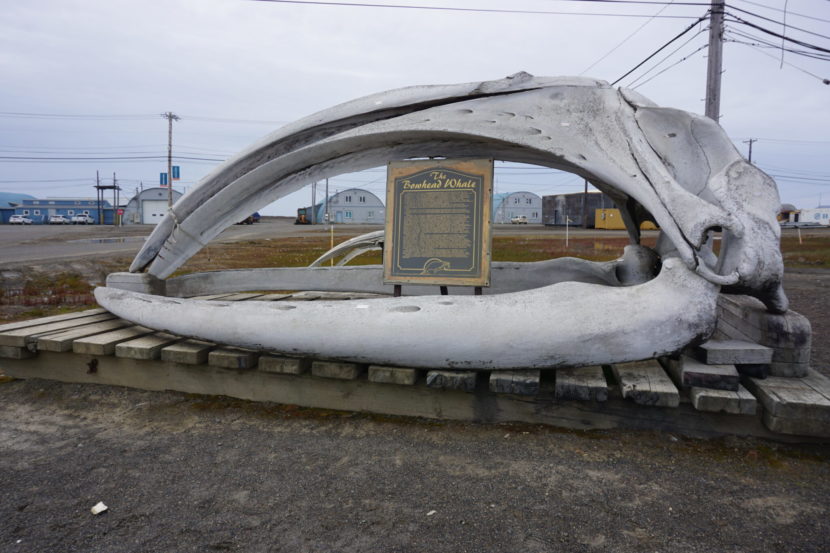
Decades later, other science organizations and projects have now concluded that they need to create similar partnerships. Some have established programs that strive for what is referred to as “co-production of knowledge.”
One program ties university researchers with Kotzebue residents. Called Ikaaġvik Sikukun, or Ice Bridges, it gives research leadership to the local elders. The National Science Foundation is operating a program called “Navigating the New Arctic” that seeks to incorporate Indigenous science and give Indigenous people more control over research undertaken in their area.
But the need for such relationships and long-term commitments clashes with what Utqiaġvik-raised geologist Richard Glenn called a “built-in defect in the system that funds research. To get that funding, scientists have to compete against each other for grants, which are usually doled out in short-term increments, he said.
“Science in America is cowboy science,” said Glenn, a longtime Iñupiat leader who recently retired from a senior vice president position at the Iñupiat-owned Arctic Slope Regional Corp. Often, he said, a winning project that seems attractive to funders ”is not likely to be the research priority of the community.”
Glenn has been working to bridge that gap, serving as a volunteer bringing together Western scientists and Inupiat experts. Such efforts are part of the “NARL effect,” he said, the mingling and cooperation among different people, “all of whom are focusing on our Arctic environment.”
A lot of NARL and its legacy is the product of chance, Glenn said. It’s chance that even brought the NARL facility to Barrow in the first place.
The genesis was the 1923 action by the administration of U.S. President Warren G. Harding to designate the surrounding region as Naval Petroleum Reserve 4, one in a series of land units set aside as possible sources of energy for the nation’s military forces.
“So they drew this big boundary around the traditional homeland of many, many families and called it the petroleum reserve,” Glenn said.
It wasn’t until the 1940s that the Navy solidified plans for actual oil and gas exploration. The original intent was for an exploration camp to be established at Cape Simpson, a site with natural oil seeps that lies east of Point Barrow along the Beaufort Sea coast, Glenn said. But bad weather there forced a retreat to the Chukchi Side and ultimate settlement near Utqiaġvik, he said.
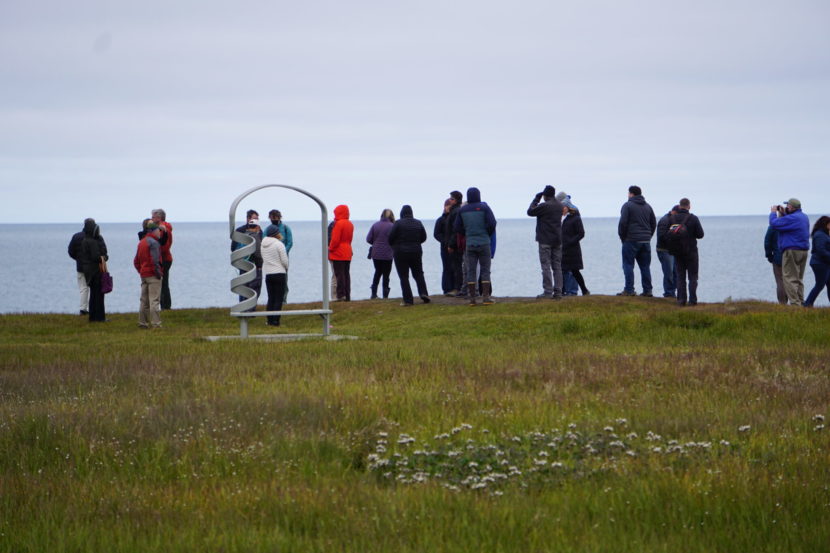
The mission quickly expanded beyond oil and gas exploration.
Study at NARL of freeze-tolerant creatures – research initially done with the idea of finding better ways to prepare Navy aviators for Arctic conditions – led to examination of below-ice gas contents. And that led to a conclusion about a new way to quantify ancient atmospheres by studying gas bubbles trapped in glacier ice.
Since then, analysis of gases in polar ice has become a foundation of research that reconstructs ancient atmospheres and environments. It has also become critical to the study of climate change, which is accentuated in the Arctic and is driving much of the Arctic research.
Climate change, in turn, is driving world events and makes the NARL legacy and the work of its successor organization even more important, said Michael Sfraga, chair of the U.S. Arctic Research Commission and moderator of one of the anniversary event’s opening sessions. The commission advises the president and Congress on Arctic research.
“We are probably gathered at the most consequential time for the Arctic,” Sfraga said.
